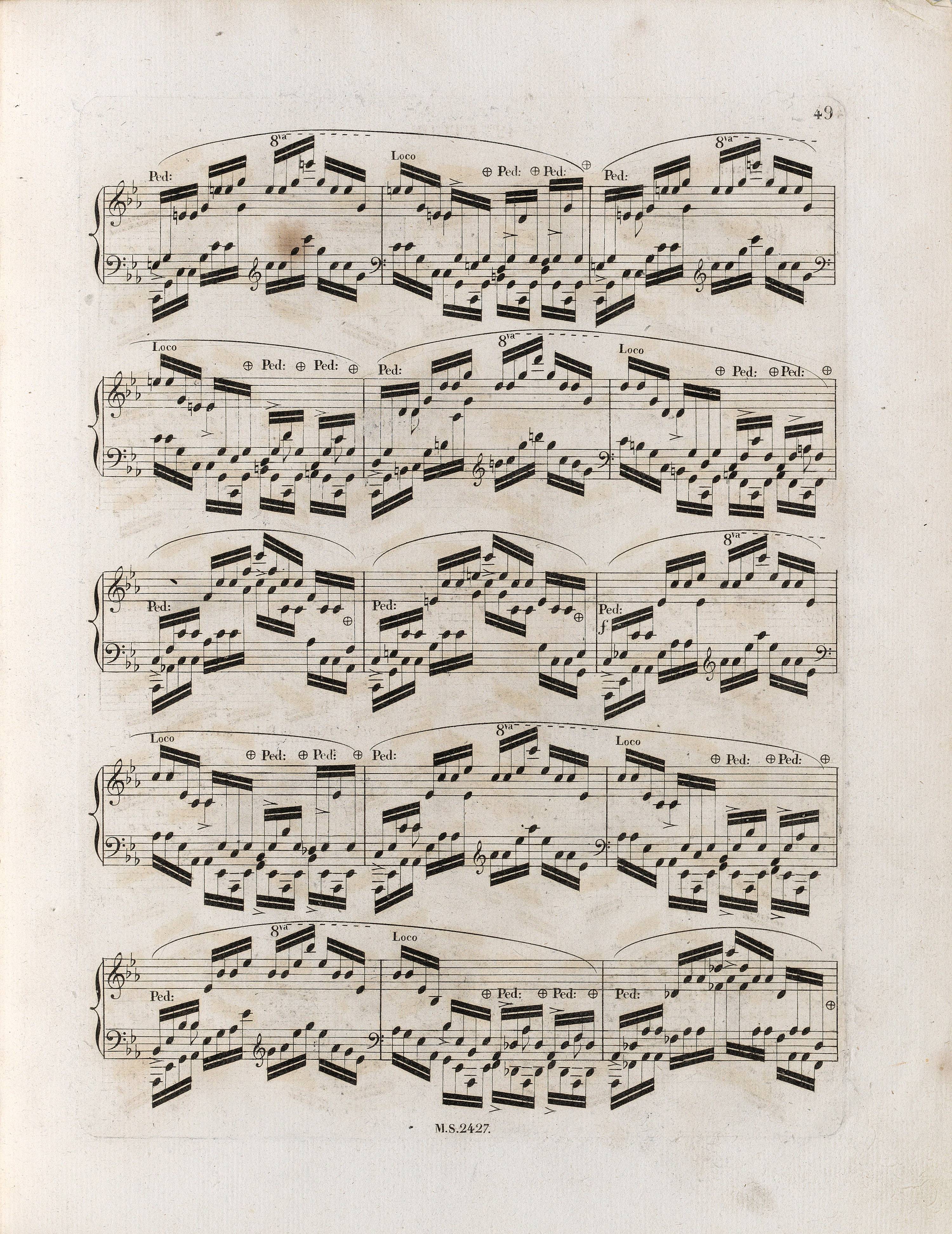



In these bars, placing the accents at the beginning of the passages between the notes is impeded, as it would be necessary for them to be placed in the area of ledger lines, which would hinder the legibility of the text. In FC and FE, which most probably faithfully convey the notation of [A], such notation is to be seen only in bars 29 and 32, Chopin placed the remaining accents over the notes. The latter was adopted in GE and EE2 in all the discussed bars, whereas in EE1 (→EE2) in four out of the five cases. In the main text, in order to underline that the accents refer to the notes performed by the both hands, we suggest double accents (cf. bars 13-14). The notation could have been used by Chopin in bar 46.
Compare the passage in the sources »
category imprint: Differences between sources; Editorial revisions
issues: EE revisions, GE revisions
notation: Articulation, Accents, Hairpins





